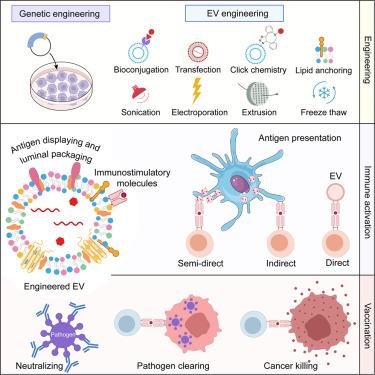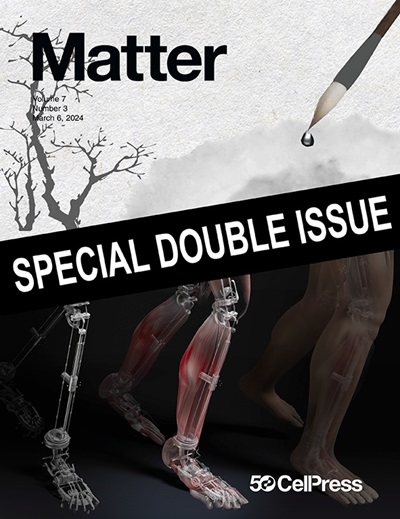工程细胞外囊泡作为下一代疫苗平台
IF 17.5
1区 材料科学
Q1 MATERIALS SCIENCE, MULTIDISCIPLINARY
引用次数: 0
摘要
细胞外囊泡(ev)为下一代纳米疫苗的设计提供了一个极好的武器库,因为它具有几个有利的特性,如出色的安全性、免疫刺激特性、淋巴靶向能力、抗原呈递能力、易于修饰的特性、较长的体内保质期以及比基于细胞的疫苗更简单的良好生产规范处理程序。在这里,我们努力总结基于ev的疫苗的最新成就,特别是那些旨在免疫传染性病原体和癌症的疫苗。强调了基因或非基因工程电动汽车装载抗原蛋白和抗原编码rna的新策略。对于每种方法,阐述了其发展的基本原理。此外,还讨论了EV的生物发生、货物分类和免疫调节作用,以及EV疫苗的临床转化、最新工业管道、当前挑战和展望方向。这篇综述可能为ev作为一种刺激强效、广泛和持久免疫的前沿疫苗平台的合理设计提供见解。本文章由计算机程序翻译,如有差异,请以英文原文为准。


Engineered extracellular vesicles as a next-generation vaccine platform
Extracellular vesicles (EVs) offer a terrific arsenal for the design of next-generation nanovaccines, owing to several favorable features, such as excellent safety, immunostimulatory properties, lymphatic targeting ability, antigen-presentation capacity, facile modification characteristics, longer shelf-lives in vivo, and simpler good manufacturing practices handling procedures than cell-based vaccines. Here, we endeavor to summarize the state-of-the-art achievements in EV-based vaccines, particularly those aimed at immunizing against infectious pathogens and cancers. The emerging strategies for genetically or non-genetically engineering EVs to be loaded with antigenic proteins and antigen-encoding RNAs are highlighted. For each methodology, the rationale underlying its development is elaborated. In addition, EV biogenesis, cargo sorting, and immunomodulatory roles are discussed, as well as the clinical translation, latest industrial pipelines, current challenges, and envisioned directions for EV vaccines. This review may offer insights into the rational design of EVs as a cutting-edge vaccine platform to stimulate potent, broad, and long-lasting immunity.
求助全文
通过发布文献求助,成功后即可免费获取论文全文。
去求助
来源期刊

Matter
MATERIALS SCIENCE, MULTIDISCIPLINARY-
CiteScore
26.30
自引率
2.60%
发文量
367
期刊介绍:
Matter, a monthly journal affiliated with Cell, spans the broad field of materials science from nano to macro levels,covering fundamentals to applications. Embracing groundbreaking technologies,it includes full-length research articles,reviews, perspectives,previews, opinions, personnel stories, and general editorial content.
Matter aims to be the primary resource for researchers in academia and industry, inspiring the next generation of materials scientists.
 求助内容:
求助内容: 应助结果提醒方式:
应助结果提醒方式:


